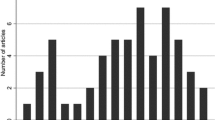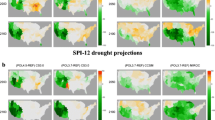Abstract
Methods and datasets necessary for evaluating water footprints (WFs) have advanced in recent years, yet integration of WF information into policy has lagged. One reason for this, we propose, is that most studies have focused on national units of analysis, overlooking scales that may be more relevant to existing water management institutions. We illustrate this by building on a recent WF assessment of California, the third largest and most populous state in the United States. While California contains diverse hydrologic regions, it also has an overarching set of water institutions that address statewide water management, including ensuring sustainable supply and demand for the state’s population and economy. The WF sheds new light on sustainable use and, in California, is being considered with a suite of sustainability indicators for long-term state water planning. Key to this integration has been grounding the method in local data and highlighting the unique characteristics of California’s WF, presented here. Compared to the U.S., California’s WF was found to be roughly equivalent in per-capita volume (6 m3d−1) and constituent products, however two policy-relevant differences stand out: (1) California’s WF is far more externalized than the U.S.’s, and (2) California depends more on “blue water” (surface and groundwater) than on “green water” (rainwater and soil moisture). These aspects of California’s WF suggest a set of vulnerabilities and policy options that do not emerge in national-level assessments. Such findings demonstrate that WF assessments may find more policy relevance when scaled to analytical units where water-related decision making occurs.



Similar content being viewed by others
References
Alcamo J, Flörke M, Märker M (2007) Future long-term changes in global water resources driven by socio-economic and climatic changes. Hydrol Sci J 52:247–275
Aldaya MM, Martínez-Santos P, Llamas MR (2009) Incorporating the Water Footprint and Virtual Water into Policy: Reflections from the Mancha Occidental Region, Spain. Water Resour Manag 24:941–958
AWAWG (2012) Water Management Issues in Alabama: A Report to the Honorable Robert Bentley. Governor of Alabama, Alabama Water Agencies Working Group
CDWR (2009) California Water Plan Update 2009. Caliornia Department of Water Resources, Sacramento
Conca K (2006) Governing water : contentious transnational politics and global institution building. MIT Press, Cambridge Mass
Cox RW (2011) Open IO: Developing a Transparent, Fully Accessible Economic Input–output Life Cycle Assessment Database. Sustainability Consortium, Fayetteville, AK
Dalin C, Konar M, Hanasaki N et al (2012) Evolution of the Global Virtual Water Trade Network. Proc Natl Acad Sci 109:5989–5994
Dietzenbacher E, Velázquez E (2007) Analysing Andalusian Virtual Water Trade in an Input–Output Framework. Reg Stud 41:185–196
Fulton J, Cooley H, Gleick PH (2012) California’s Water Footprint. Pacific Institute for Studies in Development, Environment, and Security, Oakland CA
Gawel E, Bernsen K (2013) What is wrong with virtual water trading? On the limitations of the virtual water concept. Environ Plan C Gov Policy 31:168–181
George M, Bartolome J, McDougald N et al (2001) Annual Range Forage Production: Rangeland Management Series Publication 8018. University of California, Davis
Gleick PH (2003) Water use. Annu Rev Environ Resour 28:275–314
Gleick PH, Palaniappan M (2010) Peak water limits to freshwater withdrawal and use. Proc Natl Acad Sci 2010:11155–62
Gleick PH, Haasz D, Henges-Jeck C, et al. (2003) Waste not, want not: the potential for urban water conservation in California. Pacific Institute for Studies in Development, Environment, and Security, Oakland, CA
Guan D, Hubacek K (2007) Assessment of regional trade and virtual water flows in China. Ecol Econ 61:159–170
Hillaire T, Cornwall J (2004) Ag Water Use and ETAW Model version 2.20. California Department of Water Resources, Sacramento
Hoekstra A (2010) The Global Dimension of Water Governance: Why the River Basin Approach Is No Longer Sufficient and Why Cooperative Action at Global Level Is Needed. Water 3:21–46
Hoekstra A, Chapagain A (2008) Globalization of Water: Sharing the Planet’s Freshwater Resources. 232
Hoekstra A, Mekonnen M (2012a) The water footprint of humanity. Proc Natl Acad Sci U S A 109:3232–7
Hoekstra A, Mekonnen M (2012b) Reply to Ridoutt and Huang: From water footprint assessment to policy. Proc Natl Acad Sci 109:E1425–E1425
Hoekstra A, Chapagain A, Aldaya M, Mekonnen M (2011) The Water Footprint Assessment Manual: Setting the Global Standard. Earthscan, London
Keur P, Henriksen HJ, Refsgaard JC et al (2008) Identification of Major Sources of Uncertainty in Current IWRM Practice. Illustrated for the Rhine Basin. Water Resour Manag 22:1677–1708
King C, Webber M (2008) Water intensity of transportation. Environ Sci Technol 42:21
Kohli A, Frenken K (2011) Cooling water for energy generation and its impact on national-level water statistics. Fod and Agriculture Organization, Rome
Konar M, Dalin C, Suweis S et al (2011) Water for food: The global virtual water trade network. Water Resour Res 47:1–17
Kumar MD, Singh OP (2005) Virtual Water in Global Food and Water Policy Making: Is There a Need for Rethinking? Water Resour Manag 19:759–789
Lenzen M (2009) Understanding virtual water flows: A multiregion input–output case study of Victoria. Water Resour Res 45, W09416
McGauhey P, Erlich H, Lofting E, et al. (1960) Economic evaluation of water. Sanitary Engineering Research Laboratory, University of California Berkeley
Mekonnen M, Hoekstra A (2010a) The green, blue and grey water footprint of crops and derived crop products, Value of Water Research Report Series No. 47. UNESCO-IHE, Delft, the Netherlands
Mekonnen M, Hoekstra A (2010b) The green, blue and grey water footprint of farm animals and animal products, Value of Water Research Report Series No. 48. UNESCO-IHE, Delft, the Netherlands
Mekonnen M, Hoekstra A (2011) National water footprint accounts: the green, blue and grey water footprint of production and consumption, Value of Water Research Report Series No. 50. UNESCO-IHE, Delft, the Netherlands
Pahl-Wostl C (2006) Transitions towards adaptive management of water facing climate and global change. Water Resour Manag 21:49–62
Pahl-Wostl C, Jeffrey P, Isendahl N, Brugnach M (2010) Maturing the New Water Management Paradigm: Progressing from Aspiration to Practice. Water Resour Manag 25:837–856
Pfister S, Hellweg S (2009) The water “‘shoesize’” vs. footprint of bioenergy. Proc Natl Acad Sci 106:93–94
Postel SL, Daily GC, Ehrlich PR (1996) Human Appropriation of Renewable Fresh Water. Science 271(80):785–788
Ridoutt BG, Huang J (2012) Environmental relevance--the key to understanding water footprints. Proc Natl Acad Sci U S A 109:E1424; author reply E1425.
Scown CD, Horvath A, McKone TE (2011) Water footprint of U.S. transportation fuels. Environ Sci Technol 45:2541–53
Solley WB, Pierce RR, Perlman HA (1998) Estimated use of water in the United States in 1995: U.S. Geological Survey Circular 1200. U.S. Dept. of the Interior U.S. Geological Survey, Reston, VA
Sun SK, Wu PT, Wang YB, Zhao XN (2013) Temporal Variability of Water Footprint for Maize Production: The Case of Beijing from 1978 to 2008. Water Resour Manag 27:2447–2463
USDA (1992) Weights, Measures, and Conversion Factors for Agricultural Commodities and Their Products. United States Department of Agriculture - Economic Research Service, Rockville
USDC-CB (2007) 2007 Economic Census Methodology. United States Department of Commerce - Census Bureau, Washington
Verma S, Kampman D, van der Zaag P, Hoekstra A (2009) Going against the flow: A critical analysis of inter-state virtual water trade in the context of India’s National River Linking Program. Phys Chem Earth 34:261–269
Vorosmarty C, Green P, Salisbury J, Lammers R (2000) Global Water Resources: Vulnerability from Climate Change and Population Growth. Science 289(80):284–288
Wichelns D (2010) Virtual Water: A Helpful Perspective, but not a Sufficient Policy Criterion. Water Resour Manag 24:2203–2219
Yang H, Zehnder A (2007) “Virtual water”: An unfolding concept in integrated water resources management. Water Resour Res 43:1–10
Zeng Z, Liu J, Koeneman PH et al (2012) Assessing water footprint at river basin level: a case study for the Heihe River Basin in northwest China. Hydrol Earth Syst Sci 16:2771–2781
Zhao X, Yang H, Yang Z et al (2010) Applying the input–output method to account for water footprint and virtual water trade in the Haihe River basin in China. Environ Sci Technol 44:9150–6
Zhuo L, Mekonnen MM, Hoekstra Y (2014) Sensitivity and uncertainty in crop water footprint accounting: a case study for the Yellow River Basin. Hydrol Earth Syst Sci Discuss 11:135–167
Acknowledgments
This work was supported by funding from the Pacific Institute Water and Sustainability Program.
Author information
Authors and Affiliations
Corresponding author
Rights and permissions
About this article
Cite this article
Fulton, J., Cooley, H. & Gleick, P.H. Water Footprint Outcomes and Policy Relevance Change with Scale Considered: Evidence from California. Water Resour Manage 28, 3637–3649 (2014). https://doi.org/10.1007/s11269-014-0692-1
Received:
Accepted:
Published:
Issue Date:
DOI: https://doi.org/10.1007/s11269-014-0692-1




